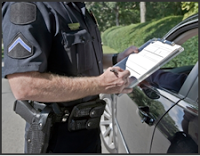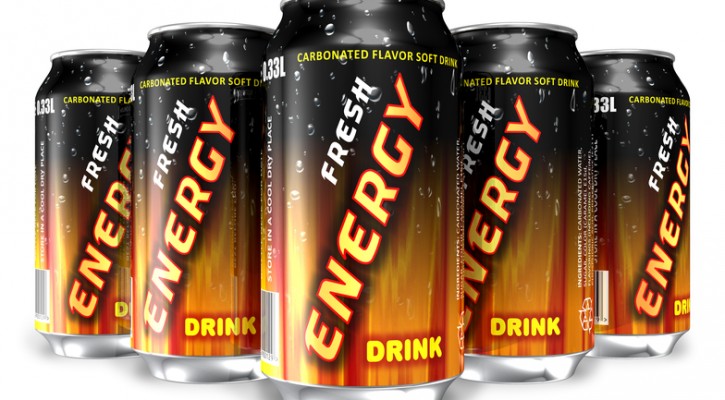
Reinstatement Requirements for a Suspended Driver’s License
December 25, 2009
If you find yourself in the difficult position of having your driver’s license suspended for too many points or traffic violations, it’s important to follow the proper steps to regain it. Most drivers who lose their licenses for any length of time hope never to repeat the experience, but drivers who have recently had their license suspended are often at high risk of having it suspended again.
First, do not drive on your suspended license, and if you have a hardship license, do not violate the terms specified on the license. If you get caught driving on a suspended license because you commit a violation or are in a crash, your situation will only deteriorate.
Use a small notebook to keep a checklist of the tasks you must complete to get your license back. These tasks may include updating your address with the Department of Motor Vehicles, going to court one or more times, paying fines and/or fees, and/or taking one or more driver education classes.
Take your notebook to every court hearing or DMV appointment so you can record all the information you get in one place. Keep the notebook handy when you make phone calls about your license too. If you call the DMV and get transferred, ask the person who assists you for their name and extension number in case you need to call back later. Make notes of what you’re told and review them before you hang up.
You may feel frustrated if you have to attend traffic school, but this is a good time to review your driving habits and decide how to change them to avoid a future suspension. Try to keep an open mind during the course. You may pick up some tips that will help keep you and your family safe.
Drivers who accumulate several traffic violations over a short period of time are often under considerable stress. Speeding, weaving in and out of traffic, running stop signs and traffic lights, and cutting off other drivers are ways that some people release aggression and relieve stress. It’s important to find positive, healthy, legal ways to reduce stress such as exercise, talking problems out with friends or a counselor, and taking time for yourself every day, so you won’t take your problems out on the road.
After your license is reinstated, you’ll want to be on your best driving behavior. Try to turn a negative into a positive by learning from the experience of having your license suspended. This will give you the best chance of improving your driving record and avoiding future problems.
Teaching Your Teen To Drive During the Christmas Holiday Season
December 14, 2009
The Christmas season is supposed to bring out the best in us but, for drivers, it seems to bring out the worse. The mad rush to commute from work, get to the mall, and complete our shopping in a reasonable amount of time, makes this season one of the most dangerous driving periods of the year. With the arrival of the Christmas shopping season, parents, whose children are learning to drive on a learner’s permit, may be reluctant to let their teen drive in such a crazy driving environment.
Only you can decide whether or not your teen may be prepared to drive during this season. For a teen who only has a month or so of driving experience, it is probably not a good idea to allow them to drive in heavy Christmas traffic. However, for a teen with a good deal of driving experience, it is probably the best time to allow them to drive while you are in the seat next to them to give them guidance. This season presents a great teaching experience and an opportunity to open up a dialogue about how not to drive.
Before you and your teen venture out to the mall, you would be wise to discuss the driving environment and let the teen know what he or she can expect. You will need to exercise a great deal of patience, both with each other and with the other drivers on the road.
What kind of driving experiences and teaching moments can you and your teen expect?
Other Drivers
This season brings out the worst in drivers. If a driver cuts you off, tries to steal your parking space, or is honking the horn when you can’t move, don’t give into the urge to retaliate by gestures, honking your horn, or flashing your lights. You may wind up pushing an irate driver over the edge into a road rage situation where the other driver may try to attack you in some way. Both you and your teen should keep your cool, pay attention to your own safety and get out of the way of an irate driver as quickly as you can.
Remember that you can’t take the right-of-way, you can only give it up to someone else. If there is a conflict with another driver trying to take the right-of-way, it is much safer to give it to them.
Intersections
Several problems will be encountered at intersections. First, and most dangerous, will be those impatient drivers who will step on the gas in hopes of beating a red light. Many drivers will deliberately run the red light. Once your light turns green, don’t be in a hurry to go. Have your teen look in all directions to make sure that no one is trying to run the red light before proceeding.
The other issue you will have to contend with are those drivers who pull forward into intersections when traffic ahead is stopped and wind up blocking the intersection when the light changes. Your teen will need to stop at the stop line before the intersection and wait until traffic ahead has cleared enough to allow her to proceed completely through the intersection.
Pedestrians
There is probably no time of year where we encounter more pedestrians on the road. Remember that pedestrians in a crosswalk, whether marked or not, always have the right-of-way. Pedestrians can’t move as fast as a car can, especially when they are burdened down with packages, so don’t expect them to jump out of your way. Remember also that pedestrians may not hear you coming. Their minds are occupied just like yours. Their ears may be wrapped in a muffler or a hat or the pedestrian could be totally deaf.
Be careful and have a safe and enjoyable holiday season.
Additional Driver Safety Tips for the Holiday Seasons:
http://alerts.nationalsafetycommission.com/2009/10/holiday-driving-halloween-safety-tips.php
http://alerts.nationalsafetycommission.com/2009/11/thanksgiving-traffic-safety-2009.php

The Effects of Energy Drinks and Driving
December 11, 2009
There are many common misconceptions about energy drinks. Since they are marketed as supplements (and often times sold in health food stores), many people assume they are healthy. Or at the very least they assume energy drinks are not unhealthy. However, energy drinks are more harmful than many people realize. The FDA regulates how much caffeine a company can put in its soft drinks. A 12 ounce soft drink may have no more than 71 mgs of caffeine. However, many energy drink makers have found a way around these restrictions. By marketing their products as supplements, instead of soft drinks they are able to put as much caffeine as they wish into their drinks. Some energy drinks on the market have over double the amount of caffeine the FDA allows in soft drinks.
Ingesting such high amounts of caffeine causes people to go into an altered state, known as caffeine intoxication. Many characteristics of caffeine intoxication are similar to the characteristics of alcohol intoxication. People experiencing caffeine intoxication experience twitching muscles, increased irritability, and slurred speech. Additionally, people who drink energy drinks often become more willing to take risks and are more likely to become distracted. It is a recipe for disaster when a distracted, irritable person who is likely to take risks gets behind the wheel of a car.
When a person uses energy drinks to compensate for missing a good night’s sleep it becomes far more dangerous. Caffeine cannot compensate for the mental and physical alertness that a person gets from a full night of sleep. For a short time caffeine may seemingly do the trick. The effects of the caffeine in energy drinks may help mask a driver’s fatigue for a short while. However, when the effects begin to wear off drivers become increasingly more fatigued and their reaction times and ability to concentrate suffer greatly. Many people describe a crashing effect and they become more acutely aware of their mental and physical fatigue. This feeling is commonly referred to as crashing, which can be likened to the hangover people have the day after a long night of drinking.
Instead of turning to caffeine drinks for artificial energy people preparing to go on a long drive should get a full night of sleep. Additionally, they should take frequent stretch breaks, stay hydrated and take power naps if needed to ensure they are mentally and physically alert on the road.
Read more driver safety tips and dangers related to energy drinks at National Safety Commissions Driver Alerts Blog.

Tips for Saving Gasoline while Driving
December 4, 2009
How many of you have ever been driving along, and taken a glance at your fuel gauge, have you ever been absolutely astounded at the lack of gas there is there? Despite the fact you only filled up last week.
With the cost of fuel rising rapidly, we all want to live more frugally in order to save extra cash for gas. But few people realize that there are a few simple ways that you could make your gas last a lot longer, meaning you end up spending less money on gas because you’re filling up a lot less frequently! And of course, these tips can help you save your environment too, which we should all be trying to do!
First of all, it’s important you look after your car, it sounds silly but having an unmaintained vehicle chugging about the place is not only bad for your wallet, but for your gas meter and the environment too! Always check your oil, air filters, and all other standard maintenance checks, by doing this it can actually make your vehicle a lot more fuel-efficient.
Make sure that all your tires are properly inflated. Statistics dictate that having your tires inflated at the correct level can actually make a difference to your gas levels, and of course as well as this, it’s a whole lot safer than having them too pumped up or too flat, and it ensures that your tires last.
One big gas waster has to be stopping and starting in rush hour traffic, so the simplest solution to this is to just avoid it completely! Leave late, or leave early, whichever is easiest, but it’s becoming more and more well know that traffic jams are one of the biggest ways to waste gas!
Alternatively, if you can work from home a couple of days a week, give it a go! Not only will it be a really nice change to day-to-day work life, but it can save you a ton in gas because you’re reducing how much you use your car. This way is also a lot kinder to the environment than driving daily.
Remove all excess, unnecessary weight. Lots of us drive around with all sorts of junk in our cars, but why? Little do we know that driving with excess weight in our cars can drag the car, meaning it will require more fuel, so it’s best to get rid of all that stuff that’s too heavy, it’s been cluttering your car anyway!
Always try to buy gasoline during the coolest times of the day. It sounds silly, but it’s actually quite intelligent. By buying gas either early in the morning or late evening means you’ll be getting gas in its densest form. When gas is warmer, it expands, meaning that when you fill up mid day in the summer, you might get a lot less than you’re paying for.
Why not try carpooling? It’s often not hard to find people who live in the same area as you and work with you, or near your place of work. By carpooling a few times a week, and switching around who takes who, you could end up saving yourself a lot of gas and money, and so could all of your colleagues!
And finally, wherever you can, try walking or cycling to your destinations, it sounds silly, but if ever you can afford to walk or cycle somewhere instead of driving, then go for it! You’ll be saving yourself gas and money, and you’ll also be saving the environment too! So try these tips and you might find yourself with more money in your pocket, and more gas in your tank!

Motor Vehicle Crashes More Frequent For Teens with Own Cars
November 23, 2009
The journal Pediatrics recently published a study that showed that teens who report having their own vehicles (vehicles they don’t share with other family members) are more than twice as likely to have been involved in a recent motor vehicle crash. The study, a survey of 2,167 teens by researchers at Children’s Hospital of Philadelphia, indicated that teens who have their own vehicles are also much more likely to participate in other risky driving behaviors, such as using a cell phone and speeding.
Why might this be? According to driver safety experts, the following aspects of teens having vehicles for their sole use are potential contributors to the higher motor vehicle collision rate:
- The teen is more likely to have selected their own vehicle: Meaning a small, sporty car; high-powered, easily maneuverable vehicles tempt teens to drive faster and take more chances behind the wheel, such as weaving in and out of traffic.
- More driving time: When teens share a vehicle with other family members, they simply aren’t on the road as much. Teens who must return the vehicle by a certain hour so another family member can use it have a natural curfew that limits time on the road. While more driving time might make a teen driver more comfortable behind the wheel, she or he is not necessarily more skilled at driving. A false sense of confidence can lead teen drivers to take risks on the road.
- Extra freedom: When teens don’t have to request the keys, they quickly fall into the habit of driving whenever and wherever they want, and parents just as quickly get used to the freedom of not having to give rides to boisterous teens and their friends. This means that teens take more frequent trips, in addition to staying out longer.
- More passengers: Teens who don’t have to share their vehicles with their parents gain status amongst their friends because they can offer transportation to those who don’t have access to family vehicles. More time in the vehicle with teen passengers means trouble – teen passengers make driving much more risky for teen drivers.
Statistically, it’s safer for your teen to share a family vehicle rather than having one of their own. For parents who still intend to buy their teens their own vehicles, traffic safety professionals offer the following guidelines:
- Choose the vehicle carefully; research your options thoroughly. Teen drivers need stable, midsize vehicles with all the safety features you can afford. Frankly, if your teen is happy with your selection, it’s a sign that you may need to reevaluate your options and choose a different vehicle.
- Make sure your teen adheres to the Graduated Driver Licensing (GDL) laws in your state. If your state doesn’t impose time limitations for teen drivers, create your own as part of your house rules. Match the number of hours your teen is allowed to drive to the level of responsibility and maturity she or he exhibits.
- Don’t allow your teen to equate having her or his own vehicle to having unrestricted driving time. Set limits on the frequency and purpose for driving trips. Accompany your teen on trips in their vehicle occasionally and observe their driving behavior carefully, watching for any bad driving habits they may have picked up while driving alone.
- Use GDL laws and the number of safety belts in your car to determine the maximum number of passengers your teen is allowed to have in the vehicle.
Check frequently to make sure your teen is complying with your restrictions. Review your cell phone bill to ensure that your teen is not making calls when she or he is typically behind the wheel. Any deviation from the rules should result in restricted (or removed) driving privileges for a specified period of time. If teens aren’t following the ground rules for use of the vehicle, parents need to penalize them by taking the keys away and acting as chauffeurs for a time.
